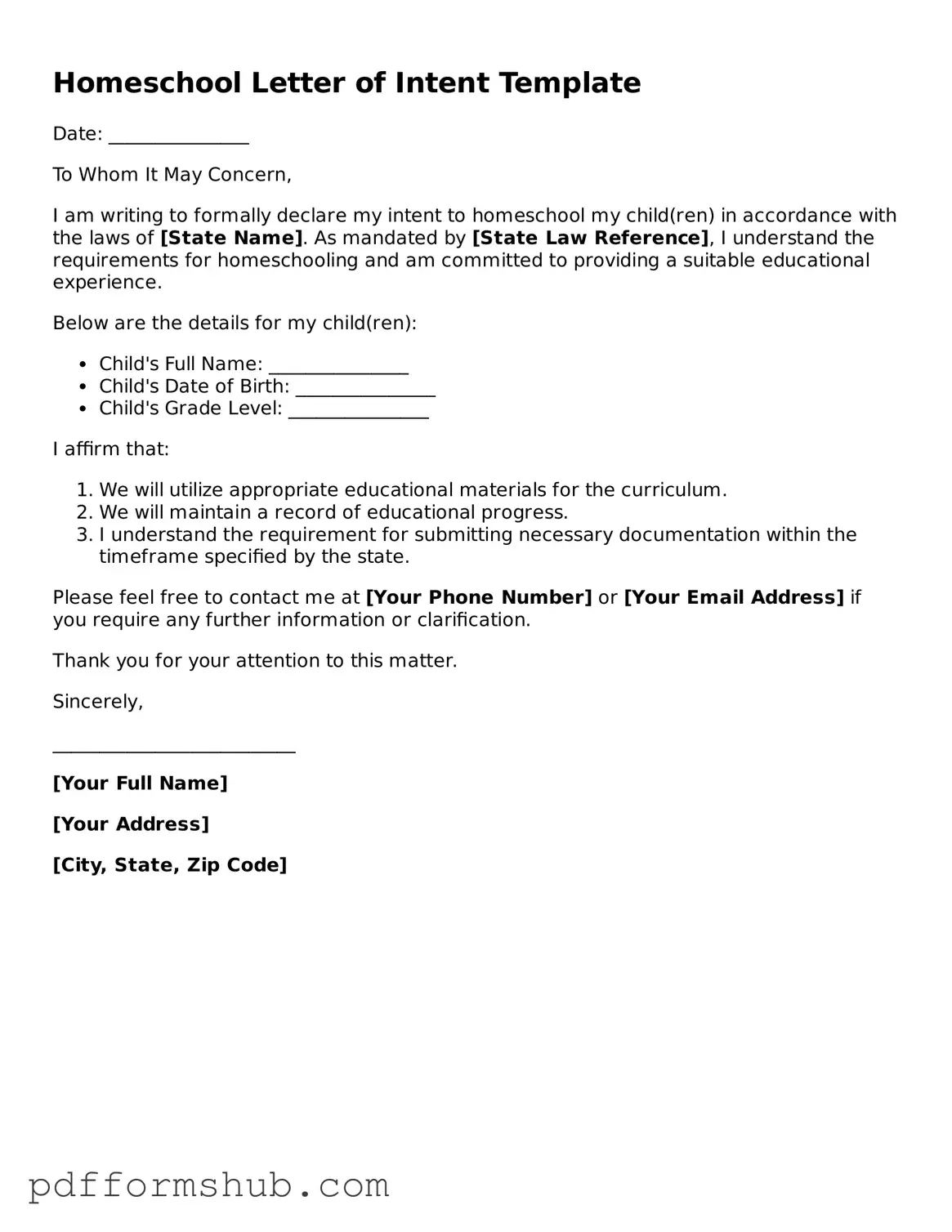Valid Homeschool Letter of Intent Form
The Homeschool Letter of Intent is a formal document submitted by parents or guardians to notify their local school district of their decision to homeschool their children. This letter serves as an important step in the homeschooling process, ensuring that the educational path chosen aligns with state regulations. If you're ready to take this significant step for your child's education, fill out the form by clicking the button below.
Customize Form
